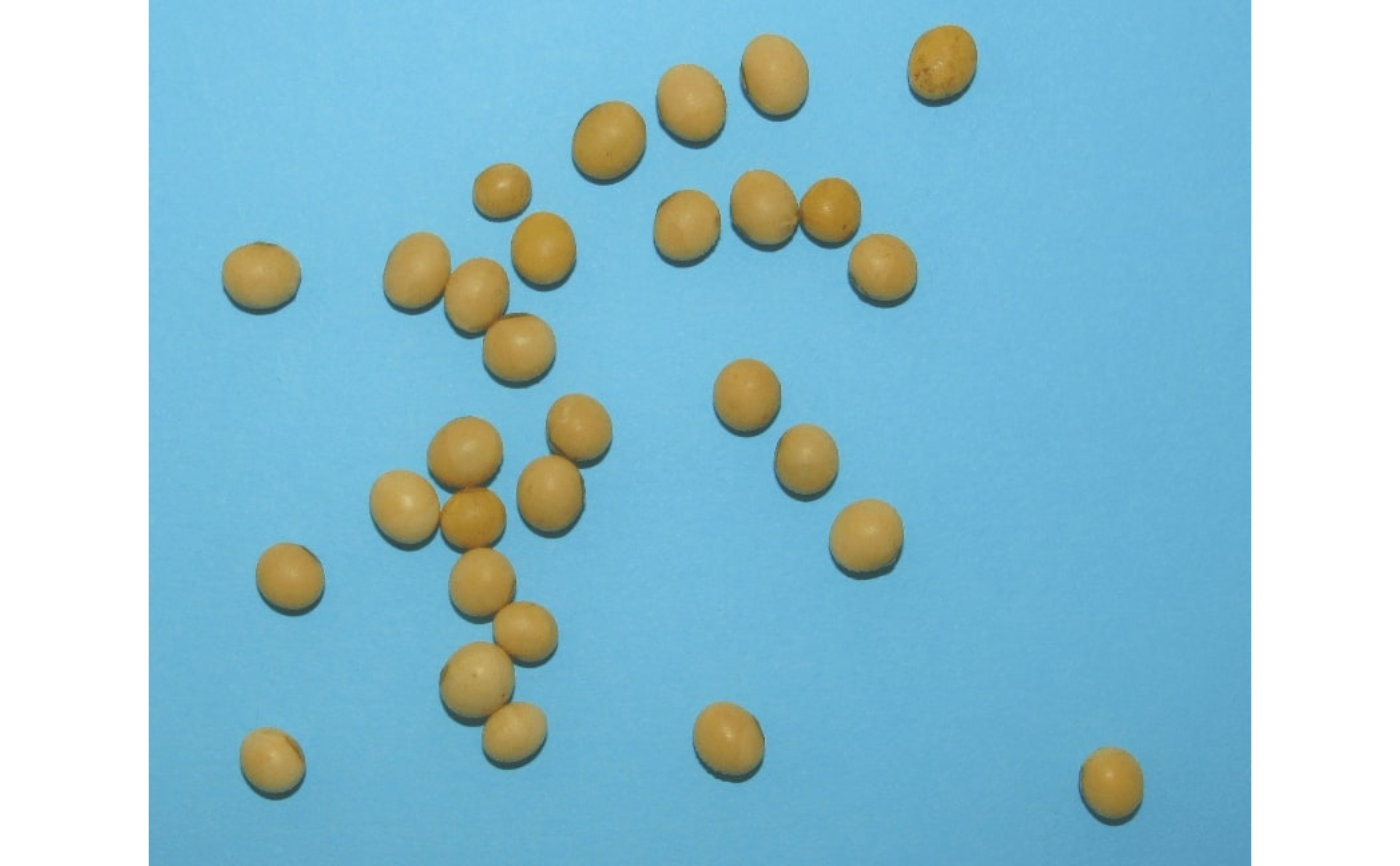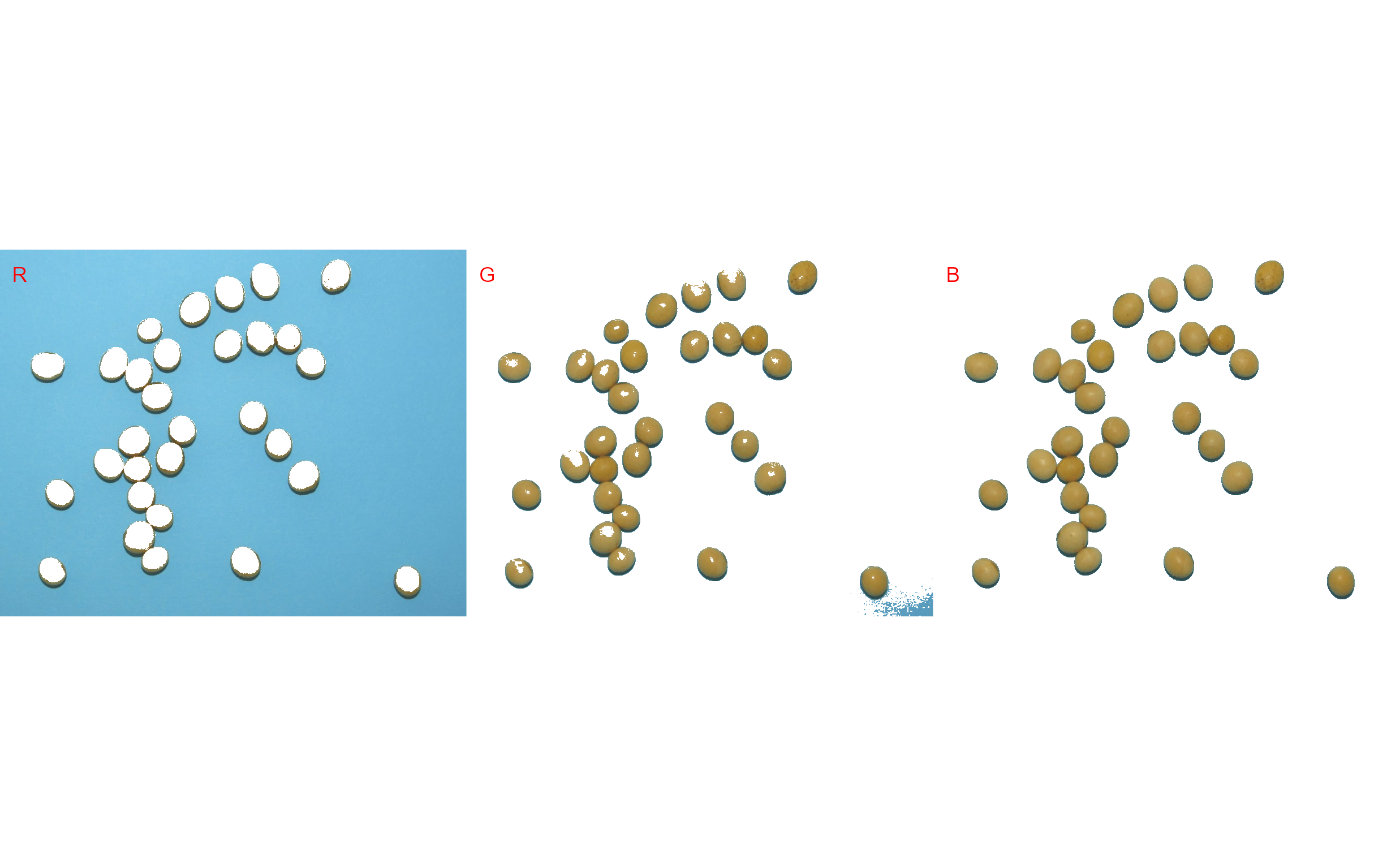image_segment()reduces a color, color near-infrared, or grayscale images to a segmented image using a given color channel (red, green blue) or even color indexes (Seeimage_index()for more details). The Otsu's thresholding method (Otsu, 1979) is used to automatically perform clustering-based image thresholding.image_segment_iter()Provides an iterative image segmentation, returning the proportions of segmented pixels.
Usage
image_segment(
img,
index = NULL,
r = 1,
g = 2,
b = 3,
re = 4,
nir = 5,
threshold = c("Otsu", "adaptive"),
k = 0.1,
windowsize = NULL,
col_background = NULL,
has_white_bg = FALSE,
fill_hull = FALSE,
filter = FALSE,
invert = FALSE,
plot = TRUE,
nrow = NULL,
ncol = NULL,
parallel = FALSE,
workers = NULL,
verbose = TRUE
)
image_segment_iter(
img,
nseg = 2,
index = NULL,
invert = NULL,
threshold = NULL,
k = 0.1,
windowsize = NULL,
has_white_bg = FALSE,
plot = TRUE,
verbose = TRUE,
nrow = NULL,
ncol = NULL,
parallel = FALSE,
workers = NULL,
...
)Arguments
- img
An image object or a list of image objects.
- index
For
image_segment(), a character value (or a vector of characters) specifying the target mode for conversion to binary image. See the available indexes withpliman_indexes(). Seeimage_index()for more details.For
image_segment_iter()a character or a vector of characters with the same length ofnseg. It can be either an available index (described above) or any operation involving the RGB values (e.g.,"B/R+G").
- r, g, b, re, nir
The red, green, blue, red-edge, and near-infrared bands of the image, respectively. Defaults to 1, 2, 3, 4, and 5, respectively. If a multispectral image is provided (5 bands), check the order of bands, which are frequently presented in the 'BGR' format.
- threshold
The theshold method to be used.
By default (
threshold = "Otsu"), a threshold value based on Otsu's method is used to reduce the grayscale image to a binary image. If a numeric value is informed, this value will be used as a threshold.If
threshold = "adaptive", adaptive thresholding (Shafait et al. 2008) is used, and will depend on thekandwindowsizearguments.If any non-numeric value different than
"Otsu"and"adaptive"is used, an iterative section will allow you to choose the threshold based on a raster plot showing pixel intensity of the index.
- k
a numeric in the range 0-1. when
kis high, local threshold values tend to be lower. whenkis low, local threshold value tend to be higher.- windowsize
windowsize controls the number of local neighborhood in adaptive thresholding. By default it is set to
1/3 * minxy, whereminxyis the minimum dimension of the image (in pixels).- col_background
The color of the segmented background. Defaults to
NULL(white background).- has_white_bg
Logical indicating whether a white background is present. If
TRUE, pixels that have R, G, and B values equals to 1 will be considered asNA. This may be useful to compute an image index for objects that have, for example, a white background. In such cases, the background will not be considered for the threshold computation.- fill_hull
Fill holes in the objects? Defaults to
FALSE.- filter
Performs median filtering in the binary image? See more at
image_filter(). Defaults toFALSE. Use a positive integer to define the size of the median filtering. Larger values are effective at removing noise, but adversely affect edges.- invert
Inverts the binary image, if desired. For
image_segmentation_iter()use a vector with the same length ofnseg.- plot
Show image after processing?
- nrow, ncol
The number of rows or columns in the plot grid. Defaults to
NULL, i.e., a square grid is produced.- parallel
Processes the images asynchronously (in parallel) in separate R sessions running in the background on the same machine. It may speed up the processing time when
imageis a list. The number of sections is set up to 70% of available cores.- workers
A positive numeric scalar or a function specifying the maximum number of parallel processes that can be active at the same time.
- verbose
If
TRUE(default) a summary is shown in the console.- nseg
The number of iterative segmentation steps to be performed.
- ...
Additional arguments passed on to
image_segment().
Value
image_segment()returns list containingnobjects wherenis the number of indexes used. Each objects contains:imagean image with the RGB bands (layers) for the segmented object.maskA mask with logical values of 0 and 1 for the segmented image.
image_segment_iter()returns a list with (1) a data frame with the proportion of pixels in the segmented images and (2) the segmented images.
References
Nobuyuki Otsu, "A threshold selection method from gray-level histograms". IEEE Trans. Sys., Man., Cyber. 9 (1): 62-66. 1979. doi:10.1109/TSMC.1979.4310076
Author
Tiago Olivoto tiagoolivoto@gmail.com
Examples
library(pliman)
img <- image_pliman("soybean_touch.jpg", plot = TRUE)
 image_segment(img, index = c("R, G, B"))
image_segment(img, index = c("R, G, B"))
 # adaptive thresholding
# adaptive thresholding
